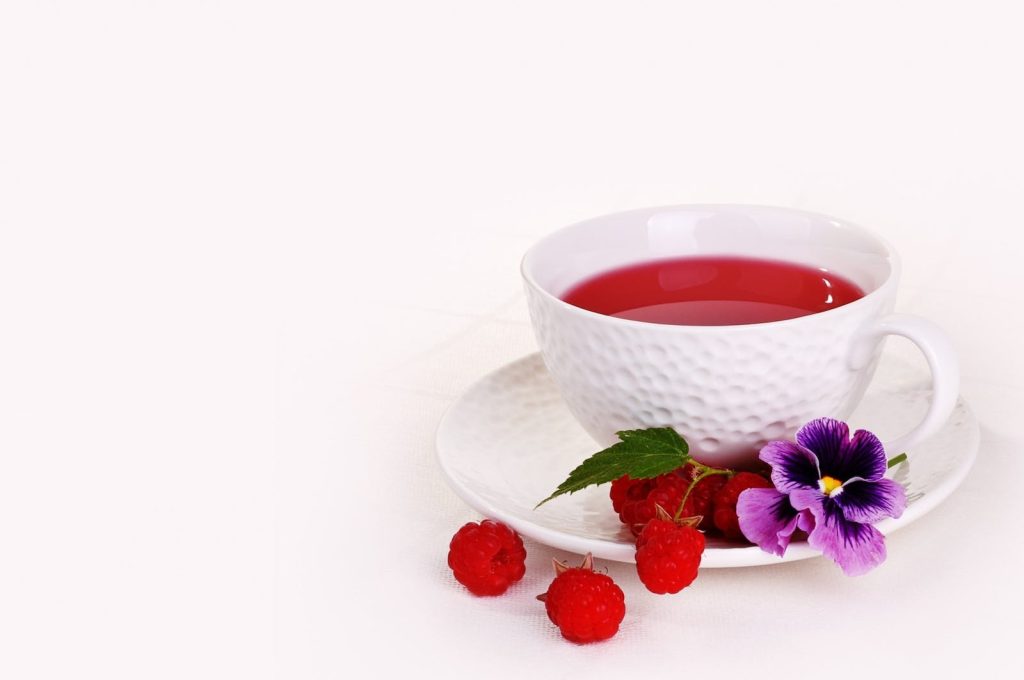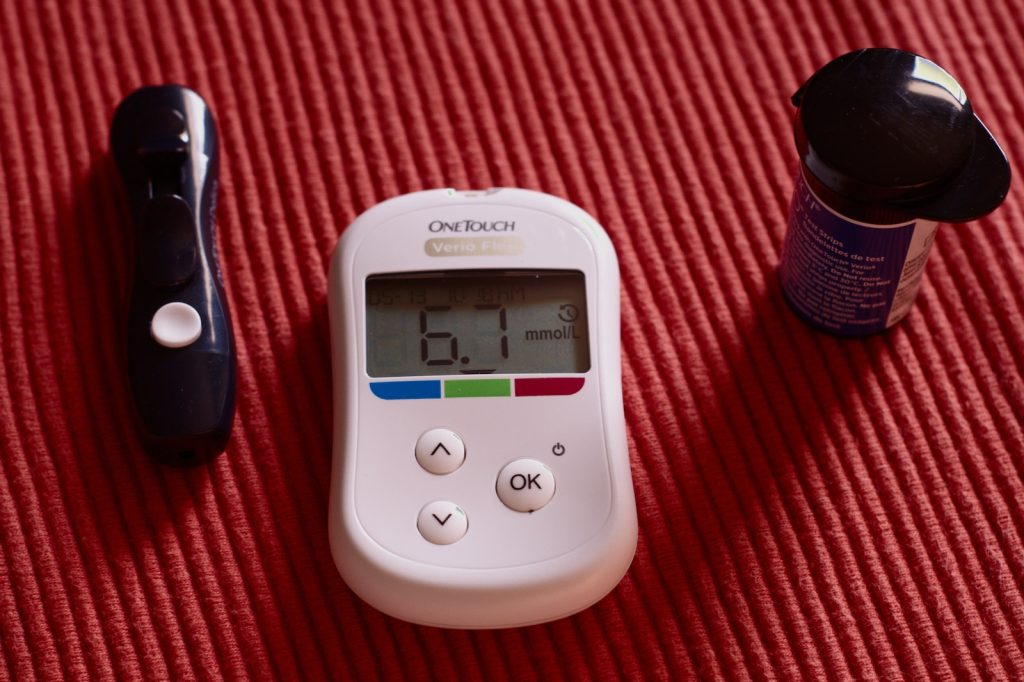
by Health And Healing AI | Dec 6, 2023 | Health
Curiosity Brews – Unraveling the Health Secrets of Boba in Bubble Tea

Sip into Curiosity – What’s Really in Your Bubble Tea Photo by Jason Leung
I stood in line, surrounded by the tempting aroma of freshly brewed tea and the anticipation of a delightful treat.
It was my first encounter with boba, those chewy tapioca pearls that transform a simple beverage into a sensation.
Little did I know that this would begin a journey into the surprising world of boba’s health benefits.
In the next few minutes, we’ll unravel the nutritional value hidden within these tiny pearls and discover how indulging in bubble tea can bring unexpected advantages to your well-being.
So, join me as we delve into the secrets of boba, sip by sip, and unveil a healthier you.
Bubble Up Your Health Knowledge – The Surprising Nutritional Facts of Boba

Bubble Tea Breakdown – A Curious Inquiry into Boba’s Nutritional Profile Photo by Pixabay
If you’re a fan of boba tea, you’re in luck: this popular Taiwanese beverage has a range of potential health benefits.
Boba tea, also known as bubble tea, is made by blending tea with milk, fruit, and chewy tapioca balls, creating a sweet and satisfying drink that’s enjoyed around the world.
While boba tea is not a substitute for a healthy diet, it may offer some benefits when consumed in moderation.
One of the potential health benefits of boba tea is its hydration properties.
Boba tea is mostly made up of water, which is essential for keeping your body hydrated and healthy.
Drinking boba tea can be a great way to stay hydrated during the day, especially if you find it difficult to drink enough water on its own.
Another potential health benefit of boba tea is its antioxidant properties.
Tea, which is a key ingredient in boba tea, contains antioxidants that help to protect your cells from damage caused by free radicals.
Additionally, some studies have shown that tea may help to reduce the risk of chronic diseases such as heart disease and cancer.
While more research is needed to confirm these benefits, drinking boba tea may be a tasty way to add more antioxidants to your diet.
Origins and Popularity
Taiwanese Drink
Boba tea, also known as bubble tea, originated in Taiwan in the 1980s.
The drink is a combination of tea, milk, and chewy tapioca balls, which are known as “boba” or “pearls.” The drink was first created in the city of Tainan, Taiwan, and quickly became popular throughout the country.
Global Spread
Boba tea’s popularity has spread globally since its creation in Taiwan.
The drink is now enjoyed in many countries, including the United States. In the U.S., bubble tea shops can be found in major cities across the country.
Boba tea has become a favorite among many people due to its unique taste and texture.
The global popularity of boba tea has led to many variations of the drink.
Some shops offer different types of tea or milk, while others add different flavors to the tapioca balls. Boba tea has become a staple in Asian cuisine and has gained a following in the U.S. due to its unique taste and texture.
Overall, boba tea’s popularity has grown since its creation in Taiwan in the 1980s. The drink has become a favorite among many people worldwide and has led to many variations of the original recipe.
Nutritional Profile
Boba, also known as bubble tea, is a popular Taiwanese drink that consists of tea, milk, and tapioca pearls. While it is a tasty treat, you may be wondering about its nutritional profile. Here’s what you need to know:
Caloric Content
Boba drinks can vary in caloric content depending on the type of tea, milk, and sweeteners used.
According to Verywell Fit, traditional tapioca boba contains 63 calories per ounce with 15 grams of carbs and plenty of added preservatives and artificial colors.
However, some boba drinks can contain up to 500 calories per serving due to added sugar and high-fat milk.
Macronutrients
Boba drinks are typically high in carbohydrates due to the tapioca pearls and added sweeteners.
However, they are generally low in protein and fiber. According to Healthline, a typical boba drink contains 7 grams of fat, most of which comes from milk powder and non-dairy creamer.
Vitamins and Minerals
While boba drinks are not a significant source of vitamins and minerals, they do contain some calcium, iron, and folate.
According to Verywell Fit, traditional tapioca boba contains 15.2mg of calcium and 1.2mg of iron per ounce. Folate is also present in small amounts.
Sodium and Potassium
Boba drinks are generally low in sodium, with traditional tapioca boba containing only 0.8mg per ounce. However, they are not a significant source of potassium.
Overall, boba drinks can be a tasty treat, but they should be consumed in moderation due to their high sugar and calorie content.
If you’re looking for a healthier option, consider choosing a tea without added milk or sweeteners and opting for fruit or herbal teas instead.
Health Benefits
If you are a fan of boba tea, you will be happy to know that it offers several health benefits. Here are some of the health benefits of boba tea:
Antioxidant Properties
Boba tea contains antioxidants that help protect your cells from damage caused by free radicals. According to Organic Facts, bubble tea can relieve oxidative stress and prevent chronic diseases.
Bone Health
Boba tea is a good source of calcium, which is essential for strong bones. According to WebMD, consuming boba tea can help improve your bone health.
Heart Health
Boba tea can help improve your heart health by lowering your blood pressure and reducing your risk of cardiovascular disease.
According to Pangbenta, the flavonoids in boba tea can help lower your blood pressure and reduce your risk of heart disease.
Weight Management
Boba tea can help with weight management when consumed in moderation.
According to Verywell Fit, boba tea contains fewer calories than other sweetened beverages. Additionally, the fiber in the tapioca pearls can help keep you feeling full for longer, reducing your overall calorie intake.
Overall, boba tea can offer some health benefits when consumed in moderation.
However, it is important to note that many boba tea drinks contain high levels of sugar, which can lead to obesity and other health problems.
So, it is important to consume boba tea in moderation and choose healthier options whenever possible.
Possible Health Concerns
While boba can provide some health benefits, there are also some possible health concerns that you should be aware of. In this section, we will discuss some of the possible health concerns associated with boba.
Sugar Content and Diabetes
Boba tea is known for its high sugar content. The sugar level in boba tea can vary depending on the type of tea, the amount of sugar added, and the size of the drink.
A 16-ounce serving of boba tea can contain up to 50 grams of sugar, which is more than the recommended daily intake of sugar for adults.
Consuming too much sugar can lead to health problems such as obesity and diabetes.
If you have diabetes or are at risk of developing diabetes, you should be careful when consuming boba tea. You may want to consider choosing a sugar-free option or limiting your intake of boba tea.
Allergies and Sensitivities
Some people may have allergies or sensitivities to the ingredients in boba tea.
The most common allergy associated with boba tea is a latex allergy. Tapioca pearls, which are used in boba tea, are made from cassava root, which contains a natural latex.
If you have a latex allergy, you should avoid boba tea or choose a boba tea that does not contain tapioca pearls.
In addition, some people may be sensitive to the caffeine in boba tea. If you are sensitive to caffeine, you should be cautious when consuming boba tea and choose a tea that has a lower caffeine content.
Overall, while boba tea can be a tasty and refreshing drink, it is important to be aware of the possible health concerns associated with it.
By being mindful of your sugar intake and any allergies or sensitivities you may have, you can enjoy boba tea in moderation as part of a healthy lifestyle.
Ingredients and Variations

A Fascinating journey to understand Boba’s role in the Cutritional value of Bubble Tea. Photo by Jane Doan
If you’re new to boba, you might be wondering what goes into making this delicious drink. Here are some of the common ingredients and variations you can expect to find:
Tea Base
The tea base is the foundation of boba, and it can be made from a variety of teas, including green tea and black tea.
Green tea is a popular choice for those who want a healthier option, as it is packed with antioxidants.
Black tea, on the other hand, is a great choice for those who want a stronger, bolder flavor.
Toppings Selection
Boba is known for its unique toppings, which can include everything from fruit jelly to grass jelly to aloe vera.
Toppings can add a burst of flavor and texture to your drink, and they’re a great way to customize your boba to your liking.
Sweetener Options
Many boba drinks contain added sugar, but there are also plenty of sweetener options available for those who want to cut back on their sugar intake.
Honey and stevia are both popular natural sweeteners, while non-dairy creamer can add a creamy sweetness to your drink without the added sugar.
When it comes to tapioca pearls, the most common boba topping, it’s important to note that they are made from cassava starch and are typically boiled in sugar syrup. While they do contain some calories and carbohydrates, they also provide a small amount of calcium and iron [1].
Overall, boba can be a fun and tasty treat, but it’s important to be mindful of the ingredients and variations you choose.
With a little creativity, you can create a boba drink that’s both delicious and healthy.
Preparation and Customization
DIY Boba Tea
Making boba tea at home is easier than you might think. You can buy boba tea kits that include everything you need to make the drink, including tapioca balls, tea bags, and sweeteners.
Alternatively, you can buy the ingredients separately and customize your drink to your liking.
To make boba tea, you’ll need to start by preparing the tapioca balls.
Boil water in a pot and add the tapioca balls. Let them simmer for 15-20 minutes until they become soft and chewy.
Drain the water and rinse the tapioca balls with cold water to prevent them from sticking together.
Next, brew your tea of choice. You can use black tea, green tea, or herbal tea, depending on your preference.
Add sweeteners, such as honey or sugar, to taste. Combine the tea and tapioca balls in a cocktail shaker and shake well.
Customizing Your Drink
One of the best things about boba tea is how customizable it is.
You can choose from a variety of teas, including milk tea, fruit tea, and matcha tea. You can also customize the sweetness and the level of ice in your drink.
In addition to the tea, you can also add a variety of toppings to your boba tea.
Common toppings include fruit jelly, grass jelly, and pudding. You can also add fresh fruit, such as strawberries or mangoes, for an extra burst of flavor.
If you’re feeling adventurous, you can even create your boba tea recipe. Experiment with different teas, sweeteners, and toppings until you find the perfect combination for your taste buds.
Overall, boba tea is a fun and customizable drink that you can enjoy at home or your favorite boba tea shop. With a little bit of creativity, you can create a drink that is uniquely yours.
Cultural Significance
Boba tea, also known as pearl milk tea, originated in Taiwan in the 1980s.
Since then, it has become a cultural icon in Asia and has gained popularity in the United States and other parts of the world. Boba tea is more than just a drink; it has become a social and lifestyle phenomenon.
Social and Lifestyle Phenomenon
Boba tea has become a popular social trend, especially among young people. It is often seen as a fun and trendy drink that people enjoy with friends. Boba tea shops have become popular hangout spots, where people can relax and socialize while enjoying their favorite drinks.
In addition, boba tea has become a part of the Asian-American identity, as it is often associated with Asian culture.
Boba tea is not just a drink, but a lifestyle. It is often seen as a way to express one’s personality and style.
Some people prefer their boba tea with milk, while others prefer it without.
Some people like their boba tea sweet, while others prefer it less sweet. Boba tea shops often offer a variety of flavors and toppings, which allows people to customize their drinks to their liking.
In conclusion, boba tea has become a cultural icon in Asia and has gained popularity in the United States and other parts of the world. It is more than just a drink; it has become a social and lifestyle phenomenon.
tea shops have become popular hangout spots, where people can relax and socialize while enjoying their favorite drinks. Boba tea is not just a drink, but a way to express one’s personality and style.
Eco-Friendly and Health-Conscious Trends

Freshly brewed tea aroma in a vibrant café setting,
As people become more health-conscious and eco-friendly, boba shops are adapting to meet these demands. Here are some of the trends that you can expect to see in the boba industry:
Sustainable Practices
Many boba shops are now using eco-friendly straws made from materials like bamboo, metal, or paper. These straws are reusable and can help reduce the amount of plastic waste that ends up in our oceans and landfills.
In addition to using eco-friendly straws, some boba shops are also implementing other sustainable practices. For example, they may use biodegradable cups and utensils or source their ingredients from local and organic farms.
Healthier Alternatives
Boba doesn’t have to be an unhealthy treat. Many boba shops are now offering healthier alternatives, such as using natural sweeteners like honey or agave instead of artificial syrups. Some shops also offer sugar-free options or use low-fat milk to make their drinks.
It’s important to note that boba should be consumed in moderation as part of a balanced diet. However, these healthier alternatives can make it easier to enjoy boba without compromising your health goals.
Antibacterial Properties
Some boba ingredients, such as tea, have natural antibacterial properties. For example, green tea has been shown to have antimicrobial effects against bacteria like E. coli and Streptococcus mutans.
While more research is needed to fully understand the antibacterial properties of boba ingredients, it’s an interesting area of study that could have potential health benefits.
Overall, these eco-friendly and health-conscious trends in the boba industry are a step in the right direction. By making small changes, boba shops can help promote a more sustainable and healthier lifestyle for their customers.
Conclusion
In conclusion, boba tea can be a delicious and refreshing beverage that also offers some potential health benefits.
While the health benefits of boba tea depend on various factors, including the ingredients, preparation method, and portion size, some key takeaways can help you make informed choices about incorporating boba tea into your diet.
Firstly, boba tea can provide a boost in energy due to its calories and carbohydrates. However, it is important to be mindful of the added sugars and calories in some boba teas, which can contribute to weight gain and other health issues.
Secondly, boba tea can be a good source of hydration, especially if you choose tea-based boba drinks. Adequate hydration is crucial for various bodily functions such as digestion, nutrient absorption, and temperature regulation.
Thirdly, boba tea may offer some potential health benefits such as improving digestive health and mental well-being. However, more research is needed to confirm these benefits.
Overall, if you enjoy boba tea, it can be a fun and tasty addition to your diet in moderation. As with any food or beverage, it is important to be mindful of the ingredients, portion sizes, and overall balance of your diet for optimal health.

by Health And Healing AI | Dec 5, 2023 | Health
Sip Your Way to Health – Explore the Surprising Powers of Lemon Green Tea

Lemon Green Tea – A Curious Journey to Healthful Bliss. Photo by Massimo Rinaldi
In the frantic rush of modern life, imagine a tranquil scene: a peaceful morning bathed in soft sunlight, with the gentle chirping of birds as your soundtrack.
You step onto a serene veranda, a cup of lemon green tea cradled in your hands, its steam rising like a mystical veil.
This moment isn’t just about a beverage; it’s the beginning of a journey to unlock the secrets of wellness through the health benefits of lemon green tea.
As you sip the warm elixir, you feel a sense of calm wash over you.
It’s like a scene from a movie where the protagonist discovers a hidden treasure, but in this story, the treasure is your well-being.
The journey we’re about to embark on isn’t a mere exploration; it’s a cinematic adventure through the wonders of lemon green tea.
Our first stop on this visual journey is the realm of weight management. Imagine a body that feels light, free of the burdens of excess pounds.
Lemon green tea is a trusted guide, aiding you in this transformation.
Its natural properties accelerate metabolism, helping you shed those unwanted pounds, and soon, you’ll see a healthier, more vibrant you reflected in the mirror.
Now, let’s transition to a different scene—the world of radiant skin.
Picture yourself in a luxurious spa, where the skin treatments promise a luminous complexion.
Lemon green tea acts as your spa therapist, cleansing your skin from within and leaving it glowing and rejuvenated.
Your reflection in the mirror will tell the story of this transformation as your skin becomes a canvas of radiance.
But our cinematic journey doesn’t end there.
We move to a mental landscape bathed in clarity and focus. Imagine a bustling city, its streets filled with distractions, and you navigate it quickly.
Lemon green tea is your mental shield, enhancing cognitive function and reducing stress, allowing you to conquer each day’s challenges like a seasoned protagonist.
By the time our cinematic journey concludes, you won’t just have watched a captivating story; you’ll have lived it.
The health benefits of lemon green tea will have become an integral part of your daily life.
So, let’s embark on this visual odyssey together, where each sip of lemon green tea is a scene in your wellness epic—a journey worth taking for a lifetime of well-being.
Dive into Wellness – The Curious Secrets of Lemon Green Tea Revealed

Curiosity Unleashed – How Lemon Green Tea Enhances Your Daily Wellness. Photo by Tranmautritam
If you’re looking for a refreshing and healthy beverage, look no further than lemon green tea.
Combining two powerful ingredients – green tea and lemon – can provide various health benefits that help you feel better inside and out.
Green tea is well-known for its antioxidant properties, which can help protect your body against damage from free radicals.
Green tea becomes even more powerful when combined with the vitamin C in lemons.
Vitamin C is also an antioxidant, and it can help boost your immune system, protect your skin from UV damage, and even reduce your risk of chronic diseases like heart disease and cancer.
But the health benefits of lemon green tea don’t stop there. This beverage can also help boost your metabolism, aid in weight loss, and improve brain function.
Plus, it’s a delicious and easy way to stay hydrated throughout the day. So why not give it a try and see how lemon green tea can benefit your health?
Nutritional Profile of Lemon Green Tea

Beyond Refreshment – The Surprising Health Perks of Lemon Green Tea Photo by ds_30
If you want a refreshing and healthy beverage, lemon green tea is a great option. This tea is packed with vitamins, minerals, and antioxidant compounds that can provide various health benefits.
Here’s a closer look at the nutritional profile of lemon green tea.
Vitamins and Minerals
Lemon green tea is a good source of several vitamins and minerals.
One of the most notable is vitamin C, which is found in lemons and green tea. Vitamin C is an antioxidant that can help protect your cells from damage caused by free radicals.
It also plays a key role in immune function and can help your body absorb iron from plant-based foods.
Green tea is also rich in several minerals, including potassium, magnesium, and calcium. These minerals are important for maintaining healthy bones, muscles, and nerves.
They also play a role in regulating blood pressure and supporting heart health.
Antioxidant Compounds
One of the main reasons to drink lemon green tea is its antioxidant content. Green tea contains several antioxidant compounds, including catechins and polyphenols.
These compounds can help protect your cells from damage caused by free radicals, which can contribute to aging and disease.
Lemons are also high in antioxidant compounds, including citric acid and flavonoids.
These compounds can help reduce inflammation and protect your cells from oxidative stress.
In summary, lemon green tea is a nutritious and delicious beverage that can provide various health benefits.
It’s a good source of vitamins, minerals, and antioxidant compounds that can help protect your cells from damage and support overall health.
Health Benefits Overview
Green tea with lemon is an excellent choice if you’re looking for a healthy beverage to add to your diet.
This drink is packed with antioxidants, vitamins, and other nutrients that can help support your overall health and well-being. Here are some of the key health benefits of green tea with lemon.
Immune System Support
Green tea with lemon is rich in antioxidants, which can help support your immune system and protect your body from harmful free radicals.
The vitamin C in lemon can also help boost your immune system and reduce your risk of infections.
Heart Health Enhancement
Drinking green tea with lemon may also help improve your heart health. Some studies have found that green tea can help lower cholesterol levels, reduce blood pressure, and strengthen blood vessels.
Meanwhile, the vitamin C in lemon can also help keep your heart healthy.
Weight Loss and Metabolism
Green tea with lemon may also benefit those looking to lose weight or improve their metabolism.
Studies suggest that green tea may help increase fat burning and reduce body fat, while the compounds in lemon may also help prevent weight gain.
Drinking green tea with lemon regularly may also help boost your metabolism and increase your energy levels.
Overall, green tea with lemon is a healthy and delicious beverage that can provide many health benefits.
Whether you’re looking to support your immune system, improve your heart health, or lose weight, adding this drink to your diet is a great way to start.
Cancer Prevention and Management

Heart symbol surrounded by green tea leaves, lemon slices.
Green tea with lemon has been found to have cancer-fighting properties that can help prevent and manage cancer. Here are some ways in which green tea can help:
Role of Antioxidants
Green tea contains antioxidants that can help protect your cells from damage caused by free radicals.
Free radicals are unstable molecules that can damage cells and contribute to cancer development.
Antioxidants help neutralize these free radicals and prevent cell damage.
Specific Cancers and Green Tea
Studies have shown that green tea can help prevent and manage breast cancer.
Green tea contains a compound called EGCG (epigallocatechin gallate) that has been found to inhibit the growth of breast cancer cells.
Additionally, green tea has been found to help reduce the risk of other types of cancer, including lung, prostate, and colorectal cancer.
In addition to its cancer-fighting properties, green tea has other health benefits.
It can help boost your immune system, improve brain function, and promote weight loss.
Overall, incorporating green tea with lemon into your diet can greatly improve your health and reduce your risk of cancer.
Managing Diabetes and Blood Sugar Levels

A Curious Cup – The Unexpected Health Miracles of Lemon Green Tea Photo by Kate
If you are living with type 2 diabetes or have concerns about your blood sugar levels, incorporating lemon green tea into your daily routine may be beneficial.
Type 2 Diabetes
Type 2 diabetes is a chronic condition that affects how your body processes blood sugar.
According to Healthline, it is the most common form of diabetes, accounting for 90-95% of all cases.
Drinking lemon green tea may help manage blood sugar levels in people with type 2 diabetes.
Green tea contains compounds called catechins, which have been shown to improve insulin sensitivity and glucose tolerance in people with diabetes.
Additionally, lemon contains flavonoids, which have been shown to reduce blood sugar levels and improve insulin resistance.
Insulin Resistance and Blood Sugar Regulation
Insulin resistance occurs when your body’s cells become less responsive to insulin, a hormone that helps regulate blood sugar levels.
When this happens, your body may struggle to use insulin effectively, leading to high blood sugar levels.
Drinking lemon green tea may help regulate blood sugar levels in people with insulin resistance.
The catechins in green tea have been shown to improve insulin sensitivity, allowing your body to use insulin more effectively.
Additionally, lemon contains compounds that may help reduce inflammation and improve blood vessel function, which can also help regulate blood sugar levels.
Incorporating lemon green tea into your daily routine is a simple and delicious way to improve your blood sugar management.
However, it is essential to remember that green tea should not be used as a substitute for medical treatment for diabetes or other health conditions.
Always consult with your healthcare provider before changing your diet or lifestyle.
Digestive Health and Detoxification

Sip by Sip – Uncovering the Curious Benefits of Lemon Green Tea for Digestion Photo by Ella Olsson
If you’re looking for a natural way to improve your digestive health, green tea with lemon might be just what you need.
Combining green tea and lemon can help with digestion, liver function, and detoxification.
Digestion Improvement
Green tea contains catechins, which are known to improve digestion.
According to a study, catechins can help reduce inflammation in the digestive tract, leading to improved digestion.
Conversely, Lemon can aid digestion and detoxification, further assisting in weight management.
Liver Function and Detoxification
The liver is responsible for detoxifying the body, and green tea with lemon is a great way to support your liver function.
Green tea contains antioxidants that can help to protect the liver from damage caused by toxins and free radicals.
Additionally, lemon contains compounds that can help to stimulate the production of bile, which is necessary for the digestion of fats.
In summary, drinking green tea with lemon can help to improve your digestive health and support your liver function. Incorporating this healthy beverage into your daily routine can be a simple and effective way to promote overall wellness.
Cognitive Function and Mental Health
Green tea with lemon has been shown to impact cognitive function and mental health positively. Here are some ways that drinking this tea can benefit your brain:
Brain Function Enhancement
Green tea contains caffeine, a natural stimulant that can help improve brain function.
Combining caffeine and theanine, an amino acid found in green tea, can also improve cognitive performance, including attention and memory.
A study published in Nutrients Journal found that green tea consumption was associated with improved cognitive function in older adults.
Stress and Anxiety Reduction
Green tea with lemon can also help reduce stress and anxiety. The antioxidants and theanine found in green tea can have a calming effect on the brain, which can help reduce feelings of stress and anxiety.
A study published in the Journal of Physiological Anthropology found that green tea consumption was associated with reduced stress levels in participants.
In addition, green tea with lemon has been shown to have neuroprotective effects, which can help protect the brain against cognitive impairment and neurodegenerative diseases.
For example, a review published in the journal Nutrients found that green tea consumption was associated with a reduced risk of cognitive impairment and Alzheimer’s disease.
Green tea with lemon can positively impact cognitive function and mental health. Incorporating this tea into your daily routine can be a simple and enjoyable way to support your brain health.
Skin Health and Appearance
Drinking green tea with lemon can positively impact your skin, health, and appearance. Here are some ways that this beverage can benefit your skin:
Anti-Inflammatory Effects on Skin
Green tea with lemon contains antioxidants and anti-inflammatory compounds that can help reduce inflammation in the body, including on the skin. Inflammation can lead to various skin problems, including acne, rosacea, and psoriasis.
By reducing inflammation, green tea with lemon may help improve the appearance of your skin and reduce the occurrence of these skin conditions.
Skin Hydration and Elasticity
Green tea with lemon also contains compounds that can help improve skin hydration and elasticity.
This can help reduce the appearance of fine lines and wrinkles and give your skin a more youthful and healthy appearance.
Additionally, the vitamin C in lemon can help boost collagen production, essential for maintaining skin elasticity.
To get the most benefit for your skin, it’s important to drink green tea with lemon regularly.
You can also try using green tea with lemon as a toner or facial mist by steeping a bag of green tea in hot water, adding a few drops of lemon juice, and then allowing the mixture to cool before applying it to your skin.
In summary, drinking green tea with lemon can benefit your skin health and appearance, including reducing inflammation and improving hydration and elasticity.
So, next time you’re looking for a refreshing and healthy beverage, consider a cup of green tea with lemon!
Side Effects and Considerations
When drinking green tea with lemon, there are a few side effects and considerations to remember. I
This section will cover some of the most important things you should know before drinking this beverage regularly.
Caffeine Sensitivity
Green tea contains caffeine, which can cause side effects in some people.
If you’re sensitive to caffeine, you may experience symptoms like jitteriness, anxiety, and insomnia.
It’s important to note that green tea contains less caffeine than coffee, but it still has enough to cause problems for some individuals.
If you’re concerned about caffeine sensitivity, you may want to start with a small amount of green tea and gradually increase your intake.
You can also try switching to decaffeinated green tea or drinking it earlier in the day to minimize the risk of sleep disturbances.
Interaction with Medications
Green tea can interact with certain medications, so it’s important to talk to your doctor before you start drinking it regularly.
Some medications that may interact with green tea include blood thinners, beta-blockers, and antidepressants.
If you’re taking any medications, tell your doctor that you’re drinking green tea.
They can advise you on whether it’s safe to continue drinking it and whether you need to adjust your medication dosage.
It’s also important to note that green tea can affect the absorption of certain nutrients, including iron.
If you’re anemic or have low iron levels, you may want to avoid drinking green tea with meals or taking iron supplements simultaneously.
Green tea with lemon can be a healthy and refreshing beverage choice. However, being aware of the potential side effects and medication interactions is essential.
Considering these considerations, you can enjoy the many health benefits of green tea with lemon while minimizing any risks.
Conclusion
In summary, drinking lemon green tea can bring numerous health benefits to your body.
The combination of green tea and lemon creates a powerful blend that can help boost your immune system, improve digestion, and reduce inflammation.
Green tea contains high levels of antioxidants that can help protect your body from harmful free radicals.
Additionally, lemon is an excellent source of vitamin C, which can help boost your immune system and improve your skin health.
Drinking lemon green tea can also aid in weight loss by boosting your metabolism and reducing your appetite.
Additionally, the caffeine in green tea can help increase your energy levels and improve your mental alertness.
Incorporating lemon green tea into your daily routine can improve your health and well-being. So why not try it and see how it can benefit you?

by Health And Healing AI | Dec 4, 2023 | Health
Elevate Your Health Journey: Discover What 48 Hours Without Food Can Do

The clock symbolizes a time for personal fasting questioning.
The clock ticked, and I found myself in uncharted territory – a 48-hour fast. It wasn’t just a personal experiment; it became a profound quest for better health and well-being.
The decision to embark on this journey was driven by an underlying empathy for the countless individuals struggling with their health, just like many of us.
As I look back, I can’t help but marvel at the incredible transformation I underwent during those two days.
Imagine the weight of your daily responsibilities, the demands of work, family, and life in general.
It often feels like there’s no time to prioritize our well-being.
But what if I told you that dedicating just 48 hours to fasting could be a lifeline, a moment of respite in the relentless rush of life?
I invite you to join me on this voyage of fasting and self-discovery, not as a distant observer but as someone who understands our challenges.
This article explores how a mere 48 hours without food can reset your body, boost your vitality, and leave you feeling rejuvenated.
Taking time for yourself can sometimes feel like an indulgence you can’t afford, but in these 48 hours, you’ll discover that an investment in your well-being pays rich dividends.
It’s a chance to pause, reset, and reconnect with your body and soul amidst the chaos of modern life.
So, get ready to dive into the world of fasting with me.
Together, we’ll unlock a new chapter of health and healing, one that’s grounded in empathy, understanding, and a genuine desire for a better tomorrow.
Fasting for 48 Hours – An Intriguing Path to Unprecedented Health Benefits

Unlock a New Realm of Health – The Curious Case of 48-Hour Fasting Photo by Brooke Lark.
If you want to improve your health, you may want to consider fasting for 48 hours.
Fasting is a practice that has been around for centuries and is known to offer a range of benefits, from weight loss to improved brain function.
While there are many different types of fasting, a 48-hour fast is one of the most popular.
During a 48-hour fast, you abstain from all food and drink except water. It can be challenging, but it’s also highly effective.
Research has shown that fasting for this length of time can help to lower inflammation, boost your immune system, and improve your overall health.
Some people also find that fasting helps them reset their eating habits and make healthier choices.
While fasting for 48 hours is generally safe for most people, talking to your doctor before you start is essential.
It is especially true if you have a medical condition or are taking medication.
Your doctor can help you determine whether fasting is proper for you and provide guidance on how to do it safely.
With the proper preparation and support, fasting for 48 hours can be a powerful tool for improving your health and well-being.
Understanding Fasting
Fasting is a practice that has been around for thousands of years and is still popular today for its health benefits.
It involves abstaining from food or drink for a particular time.
There are different types of fasting, but one of the most popular is the 48-hour fast.
What Is a 48-Hour Fast?

The human figure increased metabolism growth hormone-effect.
A 48-hour fast is a form of intermittent fasting that involves going without food or drink for two days straight.
It is also known as a water fast because you can only drink water during this time.
This type of fasting is considered more challenging than other types because it requires a more extended time without food.
A 48-hour fast can benefit weight loss, detoxification, and overall health.
During the fast, your body goes into a state of ketosis, where it begins to burn fat for energy instead of glucose.
It can lead to significant weight loss and other health benefits such as improved insulin sensitivity, reduced inflammation, and increased autophagy.
Historical Perspective of Fasting
Various cultures and religions have practiced fasting for spiritual and health reasons.
In ancient Greece, fasting was believed to cleanse the body and mind.
In the Christian tradition, fasting was used as penance and purification. In Islam, fasting during Ramadan is considered a religious obligation.
Today, fasting is still practiced for religious reasons, but it has also gained popularity as a health practice.
Research has shown that fasting can have numerous health benefits, including weight loss, improved insulin sensitivity, and reduced inflammation.
In conclusion, a 48-hour fast is a form of intermittent fasting that can have many health benefits.
It involves going without food or drink for two days straight and can be challenging, but the benefits can be significant.
Fasting has been practiced for thousands of years and is still famous for its health benefits.
Physical Health Benefits

Health benefits of fasting 48-hours illustration
Fasting for 48 hours can provide several physical health benefits. Here are some of the most significant benefits you can expect:
Weight Loss and Metabolism
One of the most well-known benefits of fasting is weight loss. When you fast, your body starts burning stored fat for energy instead of glucose.
It can lead to significant weight loss over time. According to Healthline, a 48-hour fast can lead to a weight loss of up to 4.4 pounds (2 kg).
Fasting can also boost your metabolism. When you fast, your body produces more growth hormone, which can help you burn fat and build muscle.
It can lead to a higher metabolism, which can help you burn more calories even when you’re not fasting.
Detoxification and Autophagy
Fasting can also help your body detoxify and remove harmful substances. When you fast, your body goes into autophagy, which means “self-eating.”
During autophagy, your body breaks down and recycles old and damaged cells, including cancer cells. It can help reduce your risk of cancer and other diseases.
Fasting can also help your body remove harmful toxins. Medical News Today, fasting can help your liver and kidneys remove toxins more efficiently.
It can improve your overall health and reduce your risk of chronic diseases.
Improved Insulin Sensitivity
Fasting can also improve your insulin sensitivity. When you fast, your body becomes more sensitive to insulin, which can help lower your blood sugar levels.
It can reduce your risk of type 2 diabetes and other metabolic disorders.
According to Dr. Berg, a 48-hour fast can improve your insulin sensitivity by up to 24%. It can have a significant impact on your overall health and well-being.
Fasting for 48 hours can provide several physical health benefits, including weight loss, detoxification, and improved insulin sensitivity.
However, talking to your doctor before starting any fasting regimen is essential, especially if you have any underlying health conditions.
Mental and Cognitive Effects

Transformative Insights – How 48 Hours of Fasting Impacts Your Body and Mind. Photo by Julia Volk
Fasting for 48 hours can positively impact mental and cognitive function. Here are some of the benefits you may experience:
Enhanced Brain Function
Research has shown that fasting can increase brain-derived neurotrophic factor (BDNF), a protein that helps with the growth and survival of neurons in the brain.
This increase in BDNF can lead to enhanced cognitive function, including improved memory and learning abilities.
Additionally, fasting has been shown to increase the production of new brain cells, a process known as neurogenesis.
Stress Resistance
Fasting can also help increase your body’s resistance to stress.
When you fast, your body produces ketones, molecules used for energy when glucose (sugar) is unavailable.
These ketones have been shown to have neuroprotective properties, which can help protect your brain from stress-related damage.
Additionally, fasting has been shown to reduce inflammation in the body, which can also help protect against stress-related damage.
Fasting for 48 hours can positively impact your mental and cognitive function, including enhanced brain function and stress resistance.
However, it’s important to note that fasting is unsuitable for everyone and should be approached cautiously.
If you have any concerns about fasting, it’s best to speak with a healthcare professional before starting a fasting regimen.
Longevity and Disease Prevention
Fasting for 48 hours can have several health benefits, including longevity and disease prevention.
Here are some ways fasting can help reduce cancer risk and improve heart health.
Cancer Risk Reduction
Intermittent fasting, including 48-hour fasting, has been shown to have anti-cancer effects.
According to a study published in Aging, fasting can help prevent cancer by reducing oxidative stress and inflammation, which contribute to cancer development.
Additionally, fasting can help protect healthy cells from the toxic effects of chemotherapy.
Another study published in the journal Cancer Cell found that fasting can help starve cancer cells by reducing glucose and growth factors that cancer cells need to survive.
The study also found that fasting can enhance the effectiveness of chemotherapy and radiation therapy.

Curiosity Unleashed – How a 48-Hour Fast Can Revolutionize Your Well-Being. Photo by Geralt
Fasting for 48 hours can also Improve Heart Health.
According to a study published in the journal Circulation Research, fasting can help reduce blood pressure, lower cholesterol levels, and improve insulin sensitivity, all of which are risk factors for heart disease.
Additionally, fasting can help reduce inflammation, significantly contributing to heart disease.
According to a study published in the journal Nutrition Research, fasting can help reduce levels of C-reactive protein (CRP), a marker of inflammation in the body.
In conclusion, fasting for 48 hours can have several health benefits, including longevity and disease prevention.
By reducing the risk of cancer and improving heart health, fasting can help improve overall health and well-being.
Immune System Boost
Fasting for 48 hours can have a positive impact on your immune system.
When you fast, your body goes into a state of autophagy, which is a process where your body breaks down and recycles old and damaged cells.
This process helps to remove harmful toxins and waste products from your body, which can help to boost your immune system.
Intermittent fasting has been shown to increase the production of white blood cells responsible for fighting off infections and diseases.
One study found that fasting for 48 hours can increase the production of white blood cells by up to 3 times!
This increase in white blood cells can help strengthen your immune system and reduce your risk of getting sick.
In addition to increasing white blood cells, fasting can help reduce inflammation.
Chronic inflammation has been linked to several health problems, including heart disease, diabetes, and cancer.
By reducing inflammation, fasting can help to improve your overall health and reduce your risk of developing these conditions.
Overall, fasting for 48 hours can have a positive impact on your immune system.
It can help to increase the production of white blood cells, reduce inflammation, and remove harmful toxins from your body.
If you’re looking for a natural way to boost your immune system, fasting may be worth considering.
Considerations Before Fasting
Fasting for 48 hours can have numerous health benefits, but it’s essential to consider a few factors before beginning your fast.
Pre-Fast Medical Advice
If you have any pre-existing medical conditions or are taking medication, it’s essential to consult with your doctor before embarking on a 48-hour fast.
Certain conditions, such as diabetes or hypoglycemia, may require you to modify your fasting schedule or avoid fasting altogether.
Your doctor can also advise you on managing any potential side effects of fasting, such as headaches or dizziness.
Who Should Avoid Fasting?
While fasting can be a safe and effective way to improve your health, certain groups of people should avoid fasting altogether.
Pregnant or breastfeeding women should not fast, as it can negatively impact fetal development or milk supply.
Children and adolescents should also avoid fasting, as they require a steady supply of nutrients for growth and development.
If you have a history of disordered eating or have struggled with an eating disorder in the past, fasting may not be appropriate for you.
Fasting can trigger unhealthy behaviors and thought patterns related to food and body image.
In this case, it’s essential to prioritize your mental health and seek alternative methods to improve it.
Fasting for 48 hours can be a safe and effective way to improve your health, but it’s important to consider your circumstances before beginning your fast.
By consulting with your doctor and being mindful of your body’s needs, you can reap the many benefits of fasting while avoiding potential risks.
How to Safely Break a 48-Hour Fast

Elevate Your Health Journey – Discover What 48 Hours Without Food Can Do.
Congratulations, you have completed a 48-hour fast! Now, breaking your fast is essential to avoid any adverse side effects.
Start Slowly
Start by consuming small portions of easily digestible foods. Avoid heavy and greasy meals that can cause discomfort.
Bone broth is an excellent option as it provides essential nutrients and is accessible to the digestive system.
You can also try slowly consuming small amounts of fruits and vegetables to reintroduce solid foods.
Hydrate
It would help if you had consumed plenty of water during the fast, but it’s important to continue hydrating during the breaking period.
You can also try drinking herbal teas or coconut water to replenish electrolytes.
Avoid Processed Foods
Processed foods are high in sugar, salt, and unhealthy fats, which can cause inflammation and digestive issues.
Instead, opt for whole foods such as lean protein, vegetables, and healthy fats.
Listen to Your Body
Everyone’s body reacts differently to breaking a fast, so it’s essential to listen to your body and adjust accordingly.
If you experience discomfort or digestive issues, slow down and try again later.
Breaking a 48-hour fast can be challenging, but by following these tips, you can safely reintroduce solid foods and enjoy the benefits of your fast.
Start slowly, hydrate, avoid processed foods, and listen to your body.
These benefits are supported by various sources, such as Dr. Stephen Anton – https://drstephenanton.com/48-hour-fast/,
Hone Health – https://honehealth.com/edge/nutrition/48-hour-fast/, and Dr. Berg (https://www.drberg.com/blog/48-hour-fasting).
Common Myths and Misconceptions
Fasting for 48 hours is a popular intermittent fasting method with numerous health benefits.
However, several common myths and misconceptions about this practice may discourage you.
Here are some of the most common myths and the truth behind them:
Myth #1: Fasting for 48 hours will slow down your metabolism
It is a common belief that fasting will slow your metabolism, making it harder to lose weight.
However, research has shown that short-term fasting does not significantly impact your metabolism.
Fasting can increase your metabolic rate by up to 14%, making it easier to burn calories.
Myth #2: Fasting for 48 hours is dangerous
Many people believe that fasting for 48 hours is dangerous and can lead to dehydration, low blood sugar, and other health problems.
While it is true that fasting can cause these issues if not done correctly, it is generally safe for healthy adults to fast for up to 48 hours.
Staying hydrated and breaking your fast with nutrient-dense foods is essential to avoid any potential health problems.
Myth #3: Fasting for 48 hours will cause you to lose muscle mass
It is a common misconception that fasting will cause you to lose muscle mass.
However, research has shown that short-term fasting does not significantly impact muscle mass.
Fasting can help preserve muscle mass by increasing your body’s production of human growth hormone (HGH).
Myth #4: Fasting for 48 hours is only for weight loss
While fasting can be an effective weight loss tool, it also has many other health benefits.
Fasting has been shown to improve insulin sensitivity, reduce inflammation, and promote cellular repair.
It can also improve brain function and increase longevity.
In conclusion, fasting for 48 hours is a safe and effective way to improve your health.
By debunking these common myths and misconceptions, you can make an informed decision about whether or not fasting is proper for you.
Conclusion
In conclusion, fasting for 48 hours can have numerous health benefits. It can help lose weight, improve insulin sensitivity, and reduce inflammation.
Additionally, it can improve brain function and increase the production of human growth hormones.
However, it is essential to note that fasting for 48 hours is not suitable for everyone.
People with certain medical conditions or who are pregnant, or breastfeeding should avoid fasting.
Talking to your doctor before starting a fasting regimen is also essential.
If you decide to try fasting for 48 hours, it is crucial to prepare correctly. Make sure to drink plenty of water and electrolytes to prevent dehydration.
It is also essential to break your fast slowly and with nutrient-dense foods.
Fasting for 48 hours can be a powerful tool for improving your health. However, it is crucial to approach it cautiously and with a healthcare professional’s guidance.

by Health And Healing AI | Nov 29, 2023 | Health
Unveiling the Secrets: How Port Wine Can Enhance Your Well-Being
Port wine, a fortified wine produced exclusively in the Douro Valley in the northern provinces of Portugal, is a famous dessert wine enjoyed for centuries.
Many people don’t know that port wine has several health benefits that can improve overall well-being.
In this article, we will explore some of the health benefits of port wine and how it can positively impact your health.
Moderate consumption of port wine has been linked to several health benefits, including improved cardiovascular health.

Sophisticated illustration of port wine with health infographic backdrop.
The antioxidants found in port wine, particularly resveratrol, have been shown to lower cholesterol levels and reduce blood clotting, which can reduce the risk of heart disease.
Additionally, port wine has compounds associated with longevity and brain health, which can help reduce oxidative stress on cells and improve cognitive function.
But that’s not all – port wine has also been found to have anti-inflammatory properties that can help reduce inflammation, leading to various chronic diseases.
So, if you’re looking for a delicious way to boost your health, consider adding port wine to your diet in moderation.
The Basics of Port Wine
If you’re unfamiliar with Port wine, it’s a fortified wine originating in Portugal’s Douro region.
Fortified wine is made by adding a distilled spirit to the wine during fermentation to increase the alcohol content.
The result is a sweet, rich wine perfect for sipping after dinner or with dessert.
Port wine is made from various grapes, including Touriga Nacional, Tinta Roriz, and Touriga Franca.
These grapes are grown in the Douro region, located along the Douro River in northern Portugal.
The region is known for its steep, terraced vineyards, which produce some of the world’s best grapes.
Several types of Port wine exist, including Ruby, Tawny, White Port, and Rosé Port.
Ruby Port is the most common, known for its deep red color and fruity flavor. Tawny Port is aged in oak barrels, which gives it a nutty, caramel flavor.
White Port is made from white grapes and often serves as an aperitif. Rosé Port is a contemporary style of Port wine made by blending red and white wines.
Vintage Port is a particular type of wine made in exceptional years.
These wines are aged in the bottle for several years before being ready to drink. Reserve Port is another high-quality Port wine that is aged for at least seven years before it is bottled.
In conclusion, Port wine is a delicious and unique type of fortified wine enjoyed for centuries.
Whether you prefer Ruby, Tawny, White, or Rosé Port, there’s a style of Port wine to suit everyone’s taste. So, next time you’re looking for a sweet, rich wine to enjoy, why not try Port wine?
Health Benefits of Port Wine
If you’re a fan of wine, you may be pleasantly surprised to learn that Port wine has several health benefits. Here are some of the most notable:
Rich in Antioxidants
Port wine is rich in antioxidants, which can help protect your cells from damage caused by free radicals.
Free radicals are unstable molecules that can damage your D.N.A. and contribute to aging and disease.
Antioxidants can help neutralize free radicals and reduce their harmful effects.
Port wine contains elevated levels of flavonoids and polyphenols, powerful antioxidants.
Promotes Heart Health
Moderate consumption of Port wine has been linked to a lower risk of heart disease.
The antioxidants in Port wine, particularly resveratrol, have been linked to lower cholesterol levels and reduced blood clotting.
These benefits can help promote cardiovascular health and reduce your risk of heart disease.
May Reduce Inflammation
Some research suggests that Port wine can help reduce inflammation in the body. It makes it a valuable natural remedy for arthritis and chronic pain.
It is likely because Port wine contains a high amount of polyphenol antioxidants.
Good for Brain Health
Port wine can also be good for your brain.
Studies have shown that Port wine contains prominent levels of flavonoids and antioxidants, which are great for brain health.
It includes the ability to reduce free radical damage and lower your risk of getting diseases like dementia or Alzheimer’s.
May Increase Longevity
Port wine contains various nutrients that can help increase longevity, such as potassium, which can help regulate blood pressure, and good cholesterol (HDL), which can help improve heart health.
Additionally, the antioxidants in Port wine can help reduce inflammation and oxidative stress, which are linked to aging and disease.
Digestive Aid
Port wine may also act as a digestive aid.
The tannins in Port wine can help stimulate the production of digestive enzymes, aiding digestion.
Additionally, Port wine contains compounds that can help promote the growth of beneficial gut bacteria, which can help improve overall digestive health.
Overall, Port wine can be a fantastic addition to a healthy lifestyle. However, it’s important to remember that moderation is vital.
Drinking too much Port wine can negatively affect your health, so enjoy it in moderation.
Moderate Consumption of Port
Port wine offers several health benefits, including its anti-inflammatory and antioxidant properties due to resveratrol, a polyphenol found in the grapes used to make it.
This compound can help prevent chronic diseases and maintain cardiovascular health Quinta de Jugais.
Additionally, moderate consumption of Port wine may promote longevity and reduce cholesterol levels. Health Benefits
Nutritional Content of Port Wine

Rich port wine paired with chocolate cake and nutty pastries.
You must have heard of Port wine if you are a wine lover.
Port wine is a sweet, red wine made from grapes grown in the Douro Valley of Portugal. Port wine is known for its high alcohol content and is often consumed as a dessert wine.
But did you know that Port wine also has some nutritional benefits? In this section, we will explore the nutritional content of Port wine.
Calories and Nutrients
Port wine is a high-calorie beverage, averaging 165 calories per 3.5 oz (100 ml) serving.
It also contains carbohydrates, sugars, and a small amount of fat.
However, Port wine is not a significant source of protein.
Port wine also contains some essential vitamins and minerals. For instance, it contains small amounts of calcium and iron.
However, the amounts are insufficient to provide significant health benefits.
Antioxidants
Port wine contains a high concentration of polyphenols, which are potent antioxidants.
Polyphenols are found in grape skin and seeds and have been linked to a reduced risk of oxidative stress and chronic diseases.
Furthermore, Port wine contains flavonoids, which are also potent antioxidants.
Alcohol Content
Port wine is a fortified wine, which means that it contains brandy or another distilled spirit.
The addition of brandy increases the alcohol content of Port wine to around 20%.
Drinking alcohol in moderation can have some health benefits, such as reducing the risk of heart disease.
However, excessive drinking can lead to several health problems.
Moderate Consumption
Moderate consumption of Port wine can provide some health benefits.
Drinking Port wine in moderation can help reduce LDL (harmful) cholesterol levels, decreasing the risk of heart disease.
However, it is essential to remember that drinking too much Port wine can have adverse health effects.
In conclusion, Port wine is a delicious and unique wine that can provide some nutritional benefits.
However, it is essential to consume it in moderation and not exceed the recommended daily intake of alcohol.
Port Wine and Dessert Pairings

Raise Your Glass to Health – Discovering Port Wine’s Hidden Benefits. Photo by Anastasia Ilina-Makarova
If you are a fan of dessert, then you know that a good dessert wine can make all the difference.
Port wine is perfect for pairing with vibrant, chocolatey, or nutty desserts.
When pairing port wine with dessert, remember a few things.
First, you want to make sure that the sweetness of the wine matches the sweetness of the dessert.
Second, you want to choose a port wine that complements the flavors of the dessert.
Here are a few suggestions for pairing port wine with dessert:
Chocolate Desserts
Chocolate desserts are a classic pairing with port wine. The chocolate’s richness and the wine’s sweetness complement each other perfectly.
For a decadent chocolate dessert, try pairing it with a vintage port. The bold flavors of the port will stand up to the richness of the chocolate.
Nutty Desserts
Try pairing it with a tawny port to serve a nutty dessert, like pecan pie or baklava.
The dessert’s nutty flavors will complement the port’s nutty flavors.
Cheesecake
Cheesecake is a decadent, creamy dessert that pairs well with a ruby port.
The sweetness of the port will balance out the tanginess of the cheesecake.
Fruit Desserts
Try pairing it with a white port for a lighter dessert, like a fruit tart or sorbet.
The port’s bright, fruity flavors will complement the fruit’s fresh flavors.
When it comes to pairing port wine with dessert, the possibilities are endless.
Experiment with different pairings to find your favorite combination.
The Process of Making Port Wine

Unlocking the Goodness – Port Wine Health Benefits. Photo by Tim Mossholder
If you are a wine lover, you might have heard about Port wine, a sweet and fortified wine from the Douro Valley in Portugal.
But do you know how Port wine is made?
Making Port wine involves several steps, including fermentation, fortification, and aging.
First, the grapes, which are usually a blend of different varieties, are harvested and crushed to extract the juice.
The juice is then fermented with the natural yeast on the grape skins.
During fermentation, the yeast consumes grape sugar and converts it into alcohol.
However, in the case of Port wine, the fermentation process is stopped early by adding a neutral grape spirit, also known as aguardiente, to the wine.
This process is called fortification and increases the alcohol content of the wine to around 20%.
After fortification, the wine is aged in oak barrels for at least two years.
The barrels used for aging can be made of several types of oak, such as French, American, or Portuguese.
The oak barrels impart flavors and aromas, such as vanilla, caramel, and spice, to the wine.
During aging, the wine is also exposed to oxygen, which helps to soften the tannins and develop the wine’s complex flavors and aromas. The longer the wine is aged, the more complex and richer it becomes.
Overall, the process of making Port wine is a labor-intensive and time-consuming process that requires skill and patience.
From fermentation to aging, every step is carefully monitored to ensure the wine’s quality and consistency.
If you are a fan of sweet and fortified wines, Port wine is worth trying.
Potential Risks and Side Effects of Port Wine
While moderate consumption of Port wine can offer several health benefits, excessive consumption can negatively affect your health.
Drinking too much alcohol, including Port wine, can lead to addiction, liver disease, and other health problems.
Here are some potential risks and side effects of Port wine that you should be aware of:
Alcohol Content
Port wine, like any other alcoholic beverage, contains alcohol.
Drinking too much Port wine can lead to alcohol poisoning, which can be fatal.
The alcohol content of Port wine varies depending on the type and brand, but it is higher than that of regular wine.
Therefore, it is essential to drink Port wine in moderation.
Moderation
Moderation is the key to enjoying the health benefits of Port wine while avoiding the adverse effects of excessive consumption.
The American Heart Association recommends that women limit their alcohol intake to one drink per day and men to two drinks per day.
One drink is 5 ounces of wine, less than a typical serving of Port wine.
Side Effects
Drinking too much Port wine can cause a range of side effects, including:
- Headaches
- Nausea
- Vomiting
- Dizziness
- Loss of coordination
The alcohol in Port wine causes these side effects and can be avoided in moderation.
Addiction
Drinking Port wine or any other alcoholic beverage can lead to addiction. Addiction is a severe health problem that can hurt your life.
If you find that you are drinking Port wine more frequently than you intended or that you cannot stop drinking once you start, you may have a problem with alcohol and should seek help.
In conclusion, while Port wine has several health benefits, it should be consumed in moderation.
Excessive consumption of Port wine can lead to adverse health effects, including addiction.
If you have any concerns about your alcohol consumption, you should speak to your healthcare provider.
The Global Port Wine Market

From Cellar to Wellness – Exploring Port Wine’s Healthful Side. Photo by Kathy Lee
If you are a fan of port wine, you are not alone. According to a report by Allied Market Research, the global port wine market is expected to reach $774.7 million by 2030.
This is due to the growing demand for port wines that provide advanced health benefits.
Port wine is a fortified wine produced exclusively in Portugal’s Douro Valley.
It is made by adding brandy to the wine during fermentation, which stops the fermentation and leaves residual sugar in the wine.
It gives port wine its characteristic sweetness and higher alcohol content than regular wine.
The global port wine market is predicted to experience healthy growth in the coming years due to the growing awareness among individuals worldwide about the health benefits of consuming port wines.
Moderate consumption of port wine offers several health benefits, such as preventing chronic and autoimmune diseases and maintaining mental health.
However, it might be if consumed excessively.
Port wine is also gaining popularity in the culinary world as a flavorful ingredient in savory dishes and desserts.
Its unique flavor profile and sweetness make it a versatile ingredient in various recipes.
The global port wine market is expected to grow in the coming years due to its unique flavor profile and health benefits.
Whether you enjoy a glass of port wine with dessert or use it as an ingredient in your cooking, there are many reasons to explore the world of port wine.
Conclusion
In conclusion, Port wine can offer some health benefits when consumed in moderation.
Its high resveratrol and polyphenol antioxidants make it a valuable natural remedy for reducing inflammation, promoting cardiovascular health, and increasing lifespan.
However, overconsumption of Port wine can lead to gastrointestinal problems, dehydration, and hangovers, so it’s essential to enjoy it in moderation.
To get the most out of Port wine, consider pairing it with a meal or occasionally enjoying it as a treat.
Remember that moderation is essential, and drinking Port wine can negatively affect health.
Here are some tips to help you enjoy Port wine in moderation:
- Stick to one or two glasses per day.
- Avoid drinking on an empty stomach.
- Stay hydrated by drinking water between glasses.
- Don’t drink and drive.
By following these guidelines, you can enjoy the health benefits of Port wine while avoiding the harmful effects of overconsumption.
So go ahead and raise a glass to your health but remember to do so in moderation.

by Health And Healing AI | Nov 29, 2023 | Health
Unlocking the Essence: The World of Cognac and Brandy
Are you interested in learning more about the world of spirits? Cognac and brandy are two popular types of spirits enjoyed for centuries. While they may seem similar, some key differences are worth exploring.

Cognac vs. Brandy: Unveiling Differences and Similarities.
On the other hand, Cognac is a specific type of brandy made in the Cognac region of France. It’s aged in oak barrels, but strict regulations govern its production and aging process.
This article examines the differences between Cognac and brandy, their history, and how they are made. We’ll also explore popular ways to enjoy these spirits, including classic Brandy, a distilled spirit made from fermented fruit juice.
It is typically aged in oak barrels for several years, which gives it a distinctive flavor and color.
Cocktails and food pairings. Whether you’re a seasoned spirits connoisseur or just starting to explore the world of brandy and Cognac, there’s something for everyone to learn and enjoy.
Understanding Cognac and Brandy

Ripe grape harvest for Cognac Brandy-making illustration.
If you’re a fan of distilled spirits, you’ve heard of Cognac and brandy. While these two spirits share some similarities, some key differences set them apart.
Primarily, Cognac is a type of brandy.
Specifically, it is a grape brandy made in the Cognac region of southwestern France. Cognac is protected by name and can only be called Cognac if it is produced in this region and meets specific standards.
On the other hand, Brandy is a more general term that refers to any distilled spirit made from fermented fruit juice.
While grape brandy is the most common type, other fruits can also be used to make brandy, such as apples (which make apple brandy) or pears (which make pear brandy).
Regarding the production process, both Cognac and brandy are made by distilling wine.
However, there are differences in the specific methods used to produce each spirit. For example, Cognac is double distilled in copper pot stills, while brandy is typically distilled in column stills.
Another critical difference between Cognac and brandy is their alcohol content. Cognac typically has an alcohol content of around 40%, while brandy can range from 35% to 60% alcohol by volume (A.B.V.).
Finally, it’s worth noting that both Cognac and brandy are often aged in oak barrels to give them their distinctive flavor profiles. Each spirit’s time in the barrel can vary, but aging is an essential part of the production process for both Cognac and brandy.
In summary, while Cognac and brandy are both types of distilled spirits made from wine, there are some essential differences between the two.
Cognac is a specific type of grape brandy produced in the Cognac region of France, while brandy is a more general term that can refer to any distilled spirit made from fermented fruit juice.
Understanding these differences can help you choose the right spirit for your next cocktail or after-dinner drink.
Production Process
The production process for making Cognac and brandy starts with harvesting the grapes.

Elegant bottles showcasing Cognac Brandy diversity.
The most common grape variety used in the production of Cognac and brandy is Ugni Blanc. The grapes are harvested when ripe and then pressed to extract the juice.
Juice is then fermented, which converts the sugar in the grapes into alcohol. The fermented fruit juice is then distilled, which means it is heated to separate the alcohol from the water and other impurities.
The distillation process is usually done in a copper pot, still called an Alembic Charentais, a traditional used in the Cognac region of France.
After distillation, the resulting liquid is aged in wooden barrels.
French oak barrels are the most used for aging Cognac and brandy. The aging process is essential for developing the spirit’s flavor and aroma. The longer the spirit is aged, the smoother and more complex its flavor becomes.
During the aging process, the spirit also takes on the color of the wooden barrel. French oak barrels give Cognac and brandy a golden color, while American oak barrels give the spirit a darker color.
The wooden barrels also impart flavors and aromas, such as vanilla, caramel, and spice, to the spirit.
In summary, the production process of Cognac and brandy involves harvesting the grapes, fermenting the juice, distilling the fermented fruit juice, and aging the resulting liquid in wooden barrels.
French oak barrels and the Alembic Charentais are still vital components of the production process that give Cognac and brandy unique flavors and aromas.
Types and Grades
When it comes to Cognac and brandy, there are several types and grades available. Here are some of the most common ones:
V.S. (Very Special)
V.S. stands for “Very Special” and is the youngest type of Cognac or brandy. It is aged for a minimum of two years in oak barrels. This type of spirit is usually used in cocktails or as a mixer.
V.S.O.P. (Very Superior Old Pale)
V.S.O.P. stands for “Very Superior Old Pale” and is aged for at least four years. This type of Cognac or brandy is smoother and more complex than V.S. and is often enjoyed neat or on the rocks.
X.O. (Extra Old)
X.O. stands for “Extra Old” and is aged for a minimum of six years.
This type of Cognac or brandy is the oldest and most expensive of the three. It is smooth, rich, and complex, with flavors of dried fruit, vanilla, and oak.
Some best-known cognac and brandy brands include Remy Martin, Courvoisier, and Hennessy. Remy Martin XO is a popular choice for those who want to splurge on an extra special bottle.
When choosing the best brandy, it’s essential to consider your taste preferences and budget.
Hennessy V.S. is an excellent option for those wanting high-quality brandy without breaking the bank. Rémy Martin V.S.O.P. is another excellent choice for those who want a smooth and flavorful brandy.
In summary, Cognac and brandy come in several types and grades, each with its unique flavor profile. Whether you’re looking for a mixer or a sipping spirit, there’s cognac or brandy out there.
Tasting Notes

Sophisticated-Cognac-Brandy-tasting-experience.
When tasting Cognac and brandy, there are vital notes to remember.
Both spirits have a rich, complex flavor profile that can be enjoyed independently or mixed into cocktails. Here are some of the most common tasting notes you might encounter:
- Sweetness: Cognac and brandy can have a sweet flavor profile thanks to using grapes in the distillation process. Look for notes of honey, caramel, or brown sugar.
- Caramel: Caramel is a standard note in Cognac and brandy and can add a rich, indulgent flavor to the spirit.
- Vanilla: Vanilla is another familiar note and can add a smooth, creamy texture to the drink.
- Fruitiness: Cognac and brandy can have fruity notes, with apricots and other stone fruits being particularly common.
- Tartness: Tartness can add a refreshing note to Cognac and brandy and can be found in citrus or green apple notes.
- Flowers: Some cognacs and brandies have a floral note, which can add a delicate, nuanced flavor to the drink.
- Brown color: Finally, Cognac and brandy are rich brown, indicating the aging process and the flavors that have developed over time.
When tasting Cognac or brandy, take your time to savor each sip. Start by taking a small sip and letting it sit on your tongue for a few seconds before swallowing.
It will allow you to experience the flavor profile fully and notice subtle notes. You can also experiment with different glasses and serving temperatures to enhance the flavor and aroma of the spirit.
Cocktails and Serving Suggestions
Cognac and brandy are versatile spirits that can be enjoyed neatly, on the rocks, or in cocktails. Here are some cocktail and serving suggestions to help you get the most out of your Cognac and brandy:
Neat or On the Rocks
Cognac and brandy are best enjoyed neat or on the rocks. Sipping the spirits slowly allows you to appreciate their complex flavors and aromas. To fully enjoy the taste of Cognac or brandy, use a snifter glass.
The wide bowl of the glass allows you to swirl the spirit, releasing its aromas and flavors.
Classic Cocktails
Cognac and brandy are also the base for many classic cocktails. The Sidecar is a classic cocktail with Cognac, Cointreau, and lemon juice. It is a refreshing and citrusy drink that is perfect for any occasion.
The Sazerac is another classic cocktail made with Cognac, absinthe, and bitter. It has an intense and complex flavor that is sure to impress.
Mixed Drinks
Cognac and brandy can also be used in a variety of mixed drinks.
The French 75 is a famous cocktail made with Cognac, lemon juice, simple syrup, and champagne. It is a light, refreshing drink for brunch or a summer afternoon.
Another popular mixed drink is the Brandy Alexander, made with brandy, crème de cacao, and cream. It is a rich and indulgent drink that is perfect for dessert.
Cocktail Shaker
When making mixed drinks, it is vital to use a cocktail shaker. A cocktail shaker mixes the ingredients thoroughly and chills the drink. Add ice and ingredients to the shaker to use a cocktail shaker, shake vigorously, and strain the drink into a glass.
Whether you prefer your Cognac or brandy neat, on the rocks, or in a cocktail, there are many ways to enjoy these versatile spirits. Try out some of these serving suggestions and experiment with your creations to find your perfect drink.
Brandy Varieties Around the World

Brandy bottles from various countries with flavor notes.
Brandy is a type of distilled spirit made from fermented fruit juice.
There are many diverse types of brandy produced all around the world. Each variety has its unique flavor profile, aroma, and production process. Here are some of the most famous brandy varieties from around the world:
Armagnac
Armagnac is a type of brandy produced in France’s Gascony region. It is made from a blend of grapes and is aged in oak barrels for at least two years. Armagnac has a rich, fruity flavor with vanilla, caramel, and spice notes.
Calvados
Calvados is a type of apple brandy produced in France’s Normandy region. It is made from a blend of apples and is aged in oak barrels for at least two years. Calvados has a crisp, fruity flavor with apple, cinnamon, and nutmeg notes.
Pisco
Pisco is a type of brandy that is produced in Chile and Peru. It is made from a specific type of grape called the Quebranta grape and is distilled to a high-proof. Pisco has a smooth, clean flavor with notes of citrus and floral.
Grappa
Grappa is a type of brandy that is produced in Italy. It is made from the winemaking process’s leftover grape skins, seeds, and stems. Grappa has a robust and intense flavor with notes of fruit and spice.
Applejack
Applejack is a type of apple brandy produced in the United States. It is made from a blend of apples and is aged in oak barrels for at least two years. Applejack has a smooth, fruity flavor with notes of apple and vanilla.
French Brandy
French brandy is a type of brandy produced in various regions of France. It is made from a blend of grapes and is aged in oak barrels for at least two years. French brandy has a complex, layered flavor with fruit, spice, and oak notes.
American Brandy
American brandy is a type of brandy that is produced in the United States. It is made from various grapes and is aged in oak barrels for at least two years. American brandy has a smooth, fruity flavor with notes of caramel and vanilla.
Brandy de Jerez
Brandy de Jerez is a type of brandy produced in the Jerez region of Spain. It is made from a blend of grapes and is aged in oak barrels for at least three years. Brandy de Jerez has a rich, complex flavor with fruit, spice, and oak notes.
Raki/Rakia
Raki or Rakia is a type of brandy produced in various Balkans countries, including Turkey, Bulgaria, and Serbia. It is made from various fruits, including grapes, plums, and apricots. Raki has a robust and fruity flavor with notes of anise and spice.
Eau de Vie
Eau de Vie is a type of brandy produced in various countries, including France, Switzerland, and Germany. It is made from various fruits, including apples, pears, and cherries. Eau de Vie has a crisp flavor with fruit and floral notes.
Pairing and Cooking with Cognac and Brandy

Aged to Perfection: Exploring the Aging Process of Premium Spirits.
Cognac and brandy are versatile spirits that can be used in various recipes. They can add depth and complexity to savory dishes or enhance sweet dessert flavors.
Cooking with Cognac and Brandy
When cooking with Cognac or brandy, choose a high-quality spirit that will complement the flavors of your dish. You can use Cognac or brandy in marinades, sauces, and gravies to add a rich, complex flavor.
For example, you can make a delicious pan sauce for steak by deglazing the pan with Cognac or brandy and then adding butter, shallots, and a splash of lemon juice.
You can also use Cognac or brandy to flambe dishes like chicken or shrimp scampi for a dramatic presentation.
Pairing with Cognac and Brandy
Cognac and brandy can also be paired with various foods to enhance their flavors.
For example, you can pair Cognac with decadent, creamy desserts like creme brulee or chocolate mousse. Brandy can be paired with fruit-based desserts like apple pie or poached pears.
You can pair Cognac and brandy with savory dishes like roasted pork or duck. The spirit’s flavors complement the dish’s rich, meaty flavors. You can pair Cognac or brandy with seafood dishes like scallops or shrimp for a lighter pairing.
Choosing a spirit that complements the dish’s flavors is crucial when pairing Cognac or brandy with food.
For example, you can pair Cognac with orange liqueur and champagne to make a delicious cocktail that pairs well with spicy dishes.
You can also pair brandy with white wine, cinnamon, and nutmeg to make a warm, comforting drink that pairs well with desserts.
In conclusion, Cognac and brandy are versatile spirits used in various recipes and paired with various foods. You can create delicious dishes and cocktails that impress your guests by choosing high-quality spirits and experimenting with different flavor combinations.
The Culture of Cognac and Brandy
Behind the Label: Meeting the Makers of Exceptional Spirits
Cognac and brandy are two of the most beloved spirits around the world.
They are often enjoyed as an after-dinner drink or digestif and used in classic cocktails. The culture surrounding these spirits is rich and diverse, with a history that dates back centuries.
One of the most essential aspects of Cognac and brandy is terroir. The specific region where the grapes are grown, and the brandy is distilled can significantly impact the flavor and quality of the spirit.
In the case of Cognac, the Charente region of western France is the birthplace of this iconic spirit. Other regions in France, such as Normandy, also produce high-quality brandies.
Peru is another country that produces exceptional brands. Pisco, a brandy made from grapes grown in the country’s coastal valleys, symbolizes Peruvian culture and tradition. It is often used in the country’s national drink, Pisco Sour.
The aging process is also an essential factor in the culture of Cognac and brandy. Grande Champagne, a region within the Charente, is known for producing some of the best cognacs in the world.
These cognacs are aged for years in oak barrels, allowing the flavors to develop and mature.
In addition to its rich history and terroir, Cognac and brandy symbolize sophistication and elegance. They are often enjoyed in luxurious settings like fine-dining restaurants and upscale bars.
However, they are also accessible to anyone who appreciates a good spirit.
Finally, it’s worth noting that Cognac and brandy are often compared to whiskies. While there are similarities between these spirits, Cognac and brandy have unique flavor profiles and cultural significance.
Whether you’re a seasoned spirits enthusiast or a curious beginner, exploring the world of Cognac and brandy is a journey worth taking.
Conclusion
In conclusion, Cognac and brandy are delicious and sophisticated spirits perfect for sipping or mixing into cocktails. While they share some similarities, such as being made from fermented fruit juice and aged in oak barrels, there are also some critical differences between them.

Luxurious social event highlighting Cognac Brandy elegance.
Cognac is a type of brandy exclusively produced in France’s Cognac region. It is made from specific types of grapes and must be distilled twice in copper pot stills before being aged for at least two years in oak barrels. Cognac is known for its smoothness, complexity, and rich fruit, spices, and oak flavors.
On the other hand, brandy is a more general term for any distilled spirit made from fermented fruit juice or wine. It can be made from various fruits, including grapes, apples, pears, and cherries, and can be aged in various barrels. Brandy is often less expensive than Cognac and can be an excellent option for mixing into cocktails.
Cognac and brandy have unique flavor profiles and are best enjoyed differently. Cognac is typically sipped neatly or with a splash of water, while brandy is often used in cocktails or as a digestif after a meal.
Whether you prefer Cognac or brandy, both spirits will impress your guests and add a touch of sophistication to any occasion.


































